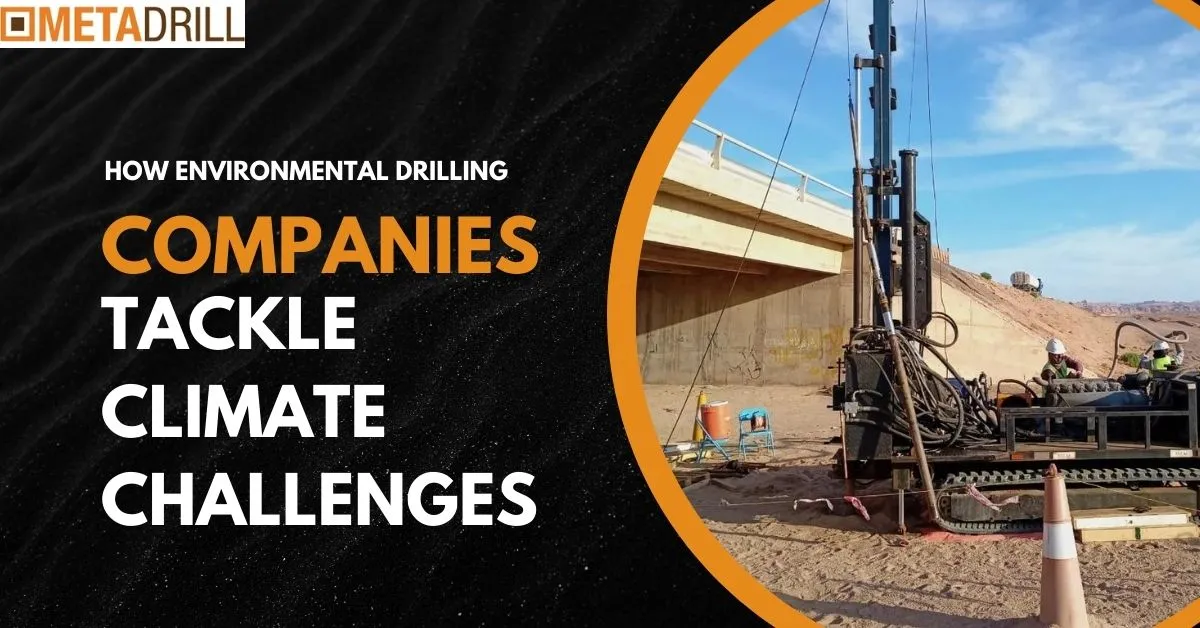
Environmental drilling companies, well known for the exploitation of natural resources such as oil and gas, have gradually been forced to combat this urgent issue: climate change. Their practices are indeed deemed to have tremendous impacts on the environment in terms of greenhouse gas emissions, habitat destruction, and water pollution. This article explores the issues and discusses the innovative strategies and technologies used by environmental drilling companies to overcome the challenges of climate change.
Embracing Environment-Friendly Drilling Practices
Another mainstream approach environmental drilling companies use to address the climate issue is embracing environment-friendly drilling practices. This primarily includes using state-of-the-art innovative drill techniques with an ecological footprint small enough. For example, directional drilling can pinpoint resources with minimal surface interference. In general, the company should minimize cases of multiple drilling sites. Companies have adopted more biodegradable drilling fluids and non-toxic additives to not pollute soils or waters in any way.
Carbon Capture and Storage (CCS)
Carbon capture and storage (CCS) is a technology innovated against climate change. Environmental drilling companies invest in capturing carbon dioxide released in drilling operations and storing it underground. CO2 is not allowed to rise into the air and thus causes global warming. Once those companies adopt CCS in their operations, their carbon footprint will be significantly reduced.
Renewable Energy Sources Utilization
All these companies are seeking to leverage renewable energy resources to further reduce environmental impacts and power in most aspects of their operations. Electricity is produced from sunlight by solar panels, wind turbines, and geothermal energy to light the drilling rigs and support facilities. This reduces greenhouse gas emissions and fossil fuels and leads towards a greener energy future.
Improvement in Energy Efficiency
The third critical strategy used by environmental drilling companies is energy efficiency. The improvements made to drilling operations and equipment minimize the amount of energy consumed and, consequently, emissions. Examples include energy-efficient motors and pumps and real-time monitoring systems, which help identify places of inefficiency in drilling operations. These improvements benefit the environment and save money for the companies making them.
Improving Environmental Monitoring and Assessment
Environmental drilling companies are doing their best to avoid disrupting the ecosystem, so they have invested in environmental monitoring and assessment. This is composed of baseline environmental studies before the drilling process begins and monitoring before, during, and after the operation. Advanced sensors and data analytics will enable companies to immediately identify and counter drilling effects.
Taking part in Reforestation and Land Reclamation
Most companies are involved in reforestation and other methods of land reclamation. This helps in restoring the environment and reversing the harmful drilling activities that take place in these areas. This also means planting trees and making sure that natural habitats are restored instead of drilling sites. There is reforestation, which absorbs carbon dioxide. There is land reclamation by ensuring an ecosystem is rehabilitated and biodiversity maintained.
Involving Stakeholders
Involving stakeholders, including local community members, governments, and environmental groups, is critical in reducing climate problems. Drilling environmental companies collaborate with the stakeholders to establish and implement accountable practices. In this regard, the concerns of all parties are consulted, and responsible drilling activities are undertaken.
Investment in Research and Development
Unrelenting investment in R&D has to be the hallmark of environmental drilling firms looking for better ways to address climate change. Research and innovations into innovative technology enhance the performance of companies under their environmental mandate. For example, more efficient rigs and water-based drilling fluids for clean rig operations are byproducts of continued R&D.
Methane Emission Mitigation
Methane is a potent greenhouse gas, and emissions from a drilling operation can significantly contribute to climatic change. Environmentally concerned drilling companies are taking detection and mitigation measures regarding methane emissions. The most prominent of these measures is modern leakage detection and remediation technology and the capture and utilization of methane for energy production.
Training and Employee Education
Employee education and training on best environmental practices are critical to the success of sustainability initiatives. Environmental drilling companies provide extensive training courses to ensure that their workforce is completely updated on the latest regulatory and technological changes regarding the environment. Employees will be empowered to make well-informed decisions and take proactive steps to minimize the company's negative impacts on the environment.
Final Thoughts
The environmental drilling industry has reached a crossroads. Until now, the industry has been associated with contributing to climate change. However, it now needs to prioritize greater sustainability. This revolves around technological advancements and collaborative efforts based on strategies set within this blog that ensure the reduction of the industry's environmental footprint.
This is, however, a fact; transitioning to a more sustainable future requires an all-rounded approach. The role of continued innovation, investment in emerging technologies, and a well-established commitment towards sustainability are all crucial. With such principles adopted, environmental drilling companies will find their place in the effort towards mitigating climate change and ensuring future generations inherit a more sustainable globe.
Question to the public: